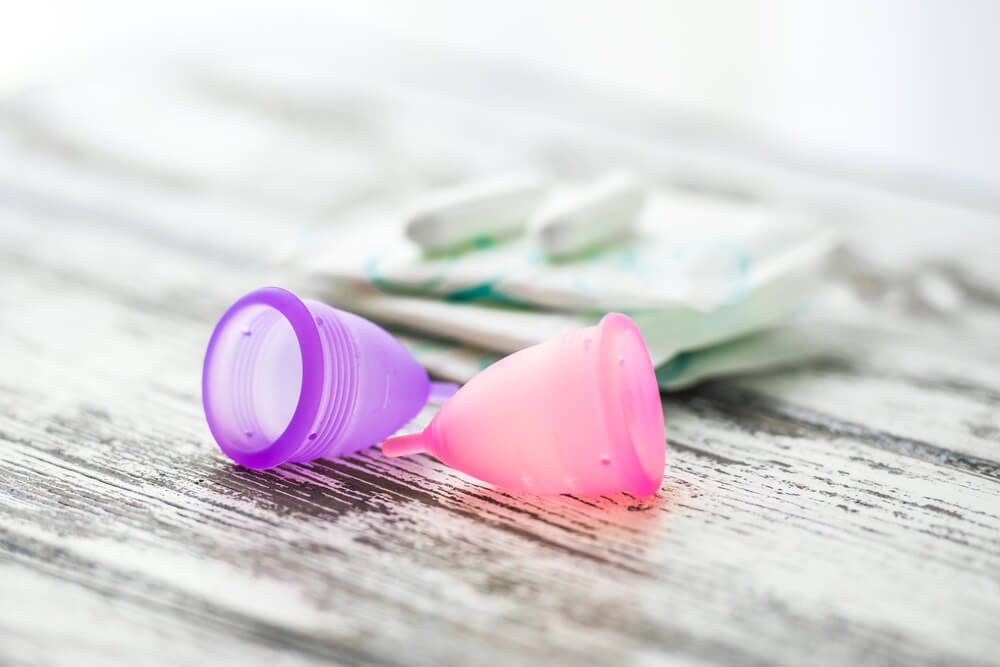It is essential for women to be as comfortable as possible during their menstrual period and much of that has to do with the hygiene products that you are using. Pads and tampons are still the typical products that most women use although menstrual cups have recently garnered much attention over the years. More women are switching to the cup and vowing never to use pads or tampons again.
In this article, we go over a few good reasons to at least consider trying menstrual cups and what to expect when using one. Only then can you decide if they are a viable alternative to the usual menstrual pads and tampons.

Table of Contents
A bit of history
Now menstrual cups are not anything new and have been around for quite some time. According to Wikipedia, the menstrual cup was first patented in 1932 but was not a commercial success. It was not until 1987 that menstrual cups became a viable alternative to typical menstrual hygiene products with the advent of latex rubber. Today, most menstrual cups are made from medical grade silicone due to its’ durable and hypoallergenic quality.
Despite its’ viability, menstrual cups began attracting attention among women only recently as people became more conscious of their carbon footprint and all the waste they have been producing. Still, most women can’t help but have lingering doubts and questions about menstrual cups which keeps them from trying it out for themselves. If you are reading this, then you probably feel the same way.
The use of reusable menstrual cups over disposable menstrual pads and tampons has clear benefits such as being cost-effective and earth-friendly. If you are looking for a better and more practical alternative to the menstrual hygiene products you have been using, then you would do well to give menstrual cups a try and start separating myths from the facts regarding its’ use.
What to expect when using menstrual cups?
Most women who have reservations about switching to menstrual cups are often concerned that they might leak accidentally and cause embarrassment which is not the case at all. When used correctly, menstrual cups rarely leaks and do not interfere with one’s daily activities even when you have to go without access to a bathroom for a while.
Women on average, release about 30 to 40 ml of blood during their menstrual cycle. A typical menstrual cup can hold up to 29 ml of blood without leaking. Of course, the amount of menstrual flow can vary among women, but menstrual cups undoubtedly need less upkeep than menstrual pads and tampons.
What is it like wearing a menstrual cup?
Another common concern among women looking to change to a menstrual cup is that it might cause injury or discomfort and lead to long-term health complications which are not true at all. While menstrual cups are bigger than a tampon, the material is extremely flexible and matches the body perfectly. Most women who have used menstrual cups for the first time often describe the experience as very comfortable such that they often forget that they are using them.
Again, most menstrual cups being sold on the market today are made from medical grade silicone or rubber and do not disrupt the vagina’s natural pH balance. Menstrual pads and tampons on the other hand work by being highly absorbent which can strip the vagina of its’ natural secretions that protect and support vaginal health.
Is it worth it?
Another factor that has to do with one’s decision to switch to menstrual cups is cost. Although they are eco-friendly and practical to use, menstrual cups can be expensive to obtain at first costing as much as $40 a piece. However, you need to consider the long-term cost to see that menstrual cups can save you much money and help out the environment in the process. According to the Huffington Post, women spend about $1,773.33 on tampons over a lifetime compared to a single purchase of a quality menstrual cup which can last you several years.
In conclusion, menstrual cups are worth considering if you are not content with using disposable pads and tampons for your menstrual hygiene products. Having reservations about switching from something that you have grown accustomed with to one that is entirely new is perfectly reasonable. However, do consider the possibility of discovering something that would be more suitable for your needs and that of the environment as well.
Author Bio
Aiza Tordil is a beauty and health blogger from Love Thyself offering helpful advice on beauty tips and healthy living which she practices to keep looking healthy and attractive.
She is passionate about sustainable living and always up on the hottest natural and organic skincare trends. Ultimately, she hopes to tell stories that strike a chord with people and provide them the importance of using only natural and organic products.




























